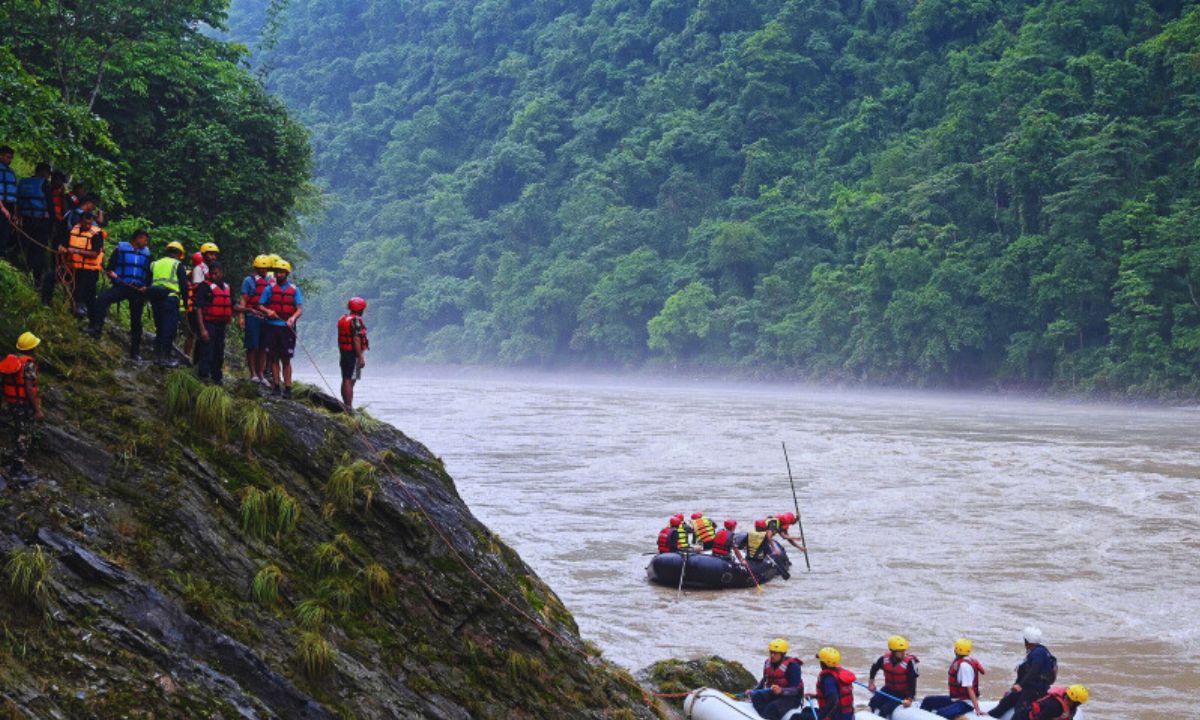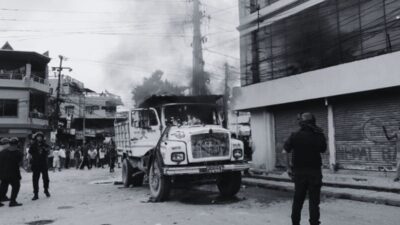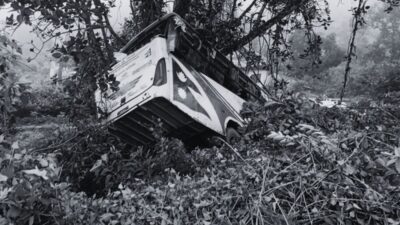Now Reading: Simaltal Bus Accident Tragedy One Year Later
- 01
Simaltal Bus Accident Tragedy One Year Later
Simaltal Bus Accident Tragedy One Year Later

It’s been a year since the deadly bus accident at Simaltal, Chitwan, but for many families of the victims, time has stood still. On July 13, 2024, two buses were swept away by a landslide into the Trishuli River. Out of 62 people on board, only three survived. Nineteen bodies were recovered and identified, while the remaining 40 people and both buses are still missing.
Families remember their loved ones today at the accident site, where a small memorial now stands. They say the government promised answers, reforms, and better rescue systems—but none of that has been fulfilled. For them, the pain continues, and so does the wait.
Committee report still in limbo
After the accident, the newly appointed Home Minister Ramesh Lekhak immediately formed a six-member investigation committee led by Joint Secretary Chhabi Rijal. The team submitted its report within a month, suggesting ways to prevent such disasters and improve rescue operations.
The report clearly mentioned that an unregulated rural road construction above the accident site had caused the landslide. It urged the government to follow legal procedures before digging such roads and improve coordination between road departments. But one year later, officials admit there’s been no serious implementation.
From road officials: Lack of compliance and awareness
Road department engineers say that while the report emphasized seeking permission before building feeder roads near highways, such practice is still not common. In Chitwan, the Division Road Office claims no new unauthorized feeder roads were built recently, but there’s little data or effort to ensure compliance.
From rescue teams: Still lacking modern tools
The accident exposed a major problem in Nepal’s disaster response—lack of modern rescue tools. Despite recommendations, authorities haven’t equipped the Armed Police Force with the necessary devices.
Janak Puri, spokesperson at the Disaster Management Training Center in Kurintar, said, “We are using the same old tools. No new equipment has been added in the past year.” Rescuers still rely on 40 HP motorboats, which struggle in strong river currents. They’ve asked for at least 60 HP boats and waterproof life jackets that work for 12 hours straight—but nothing has changed.
Even at a recent event in Kurintar, top officials acknowledged that the recommendations were not yet implemented, blaming financial constraints.
From the disaster experts: River mapping ignored
One key recommendation was to conduct underwater mapping of the Trishuli River to locate the missing buses. However, that too was never done. The task was handed to the Armed Police Force, but it remains pending. DSP Shailendra Thapa said planning is ongoing, but there’s no clear timeline.
From the survivors: A memory that won’t fade
Three passengers from the Angel Bus swam to safety through the raging river. They now live with the trauma of that night—when heavy rains triggered a landslide that swept both buses off the Narayanghat-Muglin highway and into the river.
One year later, they question why the state hasn’t done enough to prevent such disasters or support those affected. “We were lucky, but what about those who never made it home?” one of them shared anonymously.
The tragic numbers: Still haunting
Of the 62 people on board:
- 3 survived
- 19 bodies were recovered and identified (including 5 Indian nationals)
- 40 passengers remain missing
- Both buses were never found
An Indian technical team also searched the river last year but returned after a week with no success, blaming strong river currents and muddy waters.
















